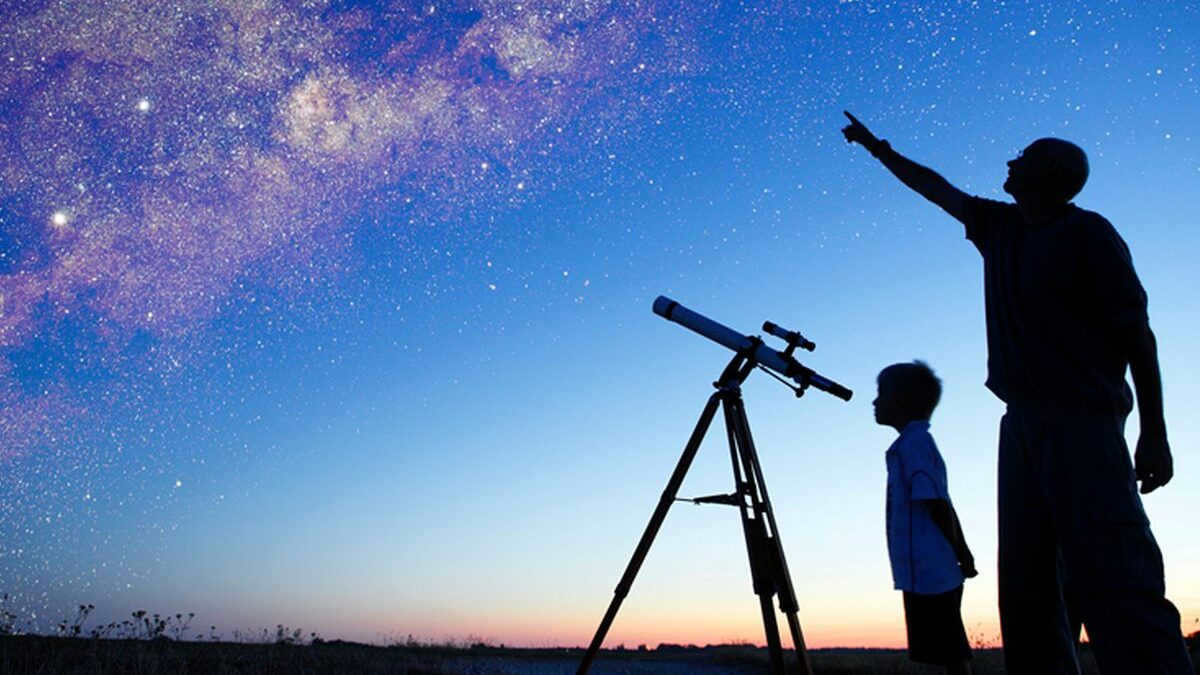
Every one of us has had the opportunity to marvel at the enigmatic and captivating night sky at least once in our lifetime. During these moments, we find ourselves pondering what lies beyond those shimmering stars, questioning whether we are truly alone in the vast expanse of the Universe. It is this thirst for knowledge and boundless fascination that gave birth to the world of amateur astronomy (AA), and eventually paved the way for serious scientific exploration.
The concept of AA emerged in the late 19th century. In 1887, Camille Flammarion established the French Astronomical Society, marking the formal beginning of AA. In Russia, the Nizhny Novgorod circle of physics and astronomy enthusiasts became pioneers in this field. Remarkably, it was founded just a year after its French counterpart.
What distinguishes amateur astronomy from scientific study?
Amateur astronomy, similar to scientific research, involves the examination of celestial bodies and systems to understand their location, motion, structure, origin, and development. However, what sets amateur astronomy apart is that it is pursued by individuals who possess a passion for the subject and equip themselves with specialized tools.





It is important for the hopeful amateur astronomer to understand that without a degree, they will not be able to find employment or receive compensation for their daily expenses while stargazing under the breathtaking night sky, unless they happen upon a meteorite. All the financial burdens of this intellectual pastime must be shouldered by the individual.
The Accomplishments and Breakthroughs of Non-professional Astronomers
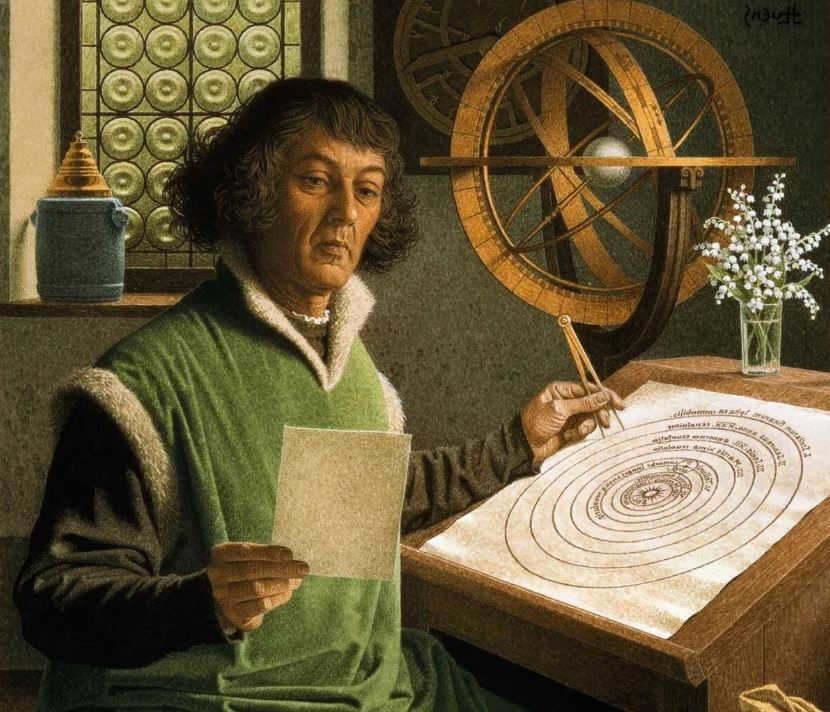
However, despite its apparent lack of significance, the LA plays a crucial role in its more serious counterpart. Let us not forget about the great minds such as Omar Khayyam, Mohammed Taragai, Nicolaus Copernicus, Nicolaus of Cusa, Giordano Bruno, Galileo Galilei, Johannes Kepler, Isaac Newton, and William Herschel – the pillars of modern astronomy. None of them held a degree in astronomy, and many were actually priests.
Currently, there are only a few professional astronomers and observatories worldwide. They simply cannot cover the vast expanse of the universe with their telescopic gazes alone. Once again, amateur astronomers come to their aid. In a world filled with advanced technology and highly developed scientific disciplines, their assistance is still indispensable. Thanks to the innate curiosity of many individuals:
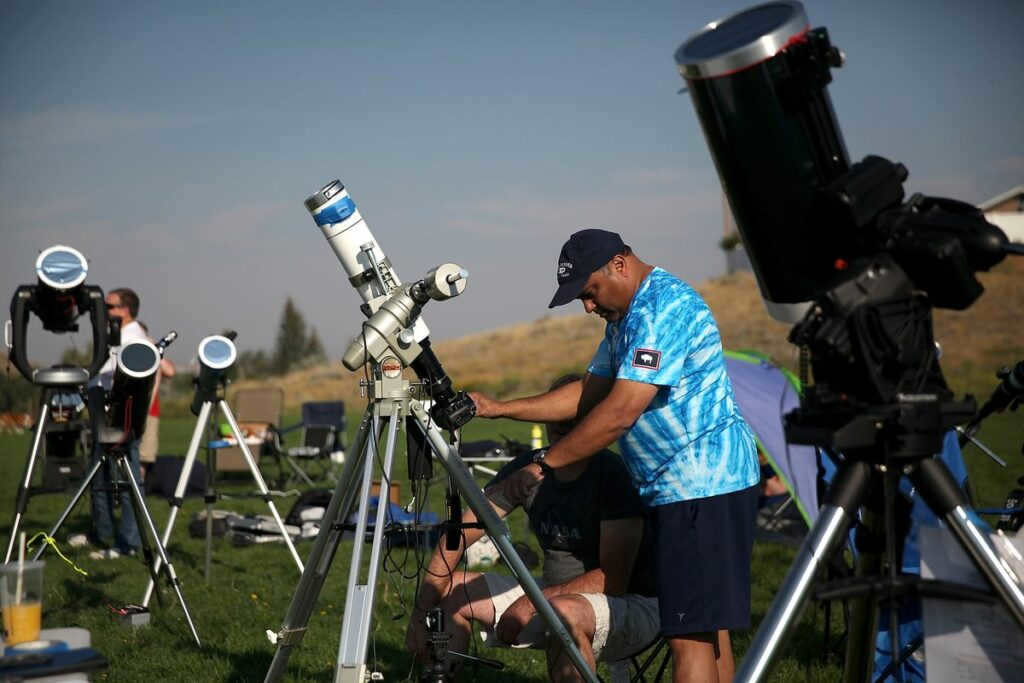
- The English astronomer William Herschel discovered the planet Uranus in 1781;
- Australian Michael Sidonio discovered the small galaxy NGC 253-dw2 in 2001;
- In late 2012, the Planet Hunters (a group of amateur astronomers) discovered 42 new planets, 15 of which have potential for supporting life. In October of that year, Kianu Jecu and Robert Gagliano discovered planet PH1, a gas giant that orbits two suns;
- In 2015, members of the Zooniverse project discovered unusual yellow orbs in images from the Spitzer telescope. NASA conducted a detailed study and found that the images captured the early stages of star formation.
At present, there are several categories of LA:
- Observers, also known as visual observers, derive pleasure from gazing at the celestial bodies using their naked eye, binoculars, or a telescope. Among them, there are individuals who set up a telescope on urban streets and encourage the public to take a look through the eyepiece – these individuals are referred to as “sidewalkers”.
- Astrophotographers are those who enjoy capturing vivid images of celestial objects, whether it be through photography or drawings.
- There exists a whole community of skilled individuals who manually create optical instruments, mechanisms, and various intricate gadgets. They are enthusiasts of telescope construction – another form of contemporary LA. Every amateur astronomer should possess knowledge and skills not only in maintaining their observing instrument but also in upgrading it to meet the demands of the present.
- The scientific research and discoveries category of LA is the most intricate. The vastness of space still holds countless enigmas and is not very forthcoming in revealing them. There is still much to be uncovered, such as new and exploding stars, meteor showers, comets, asteroids, and planets (particularly those in other star systems).
Contemporary astroclubs and festivals
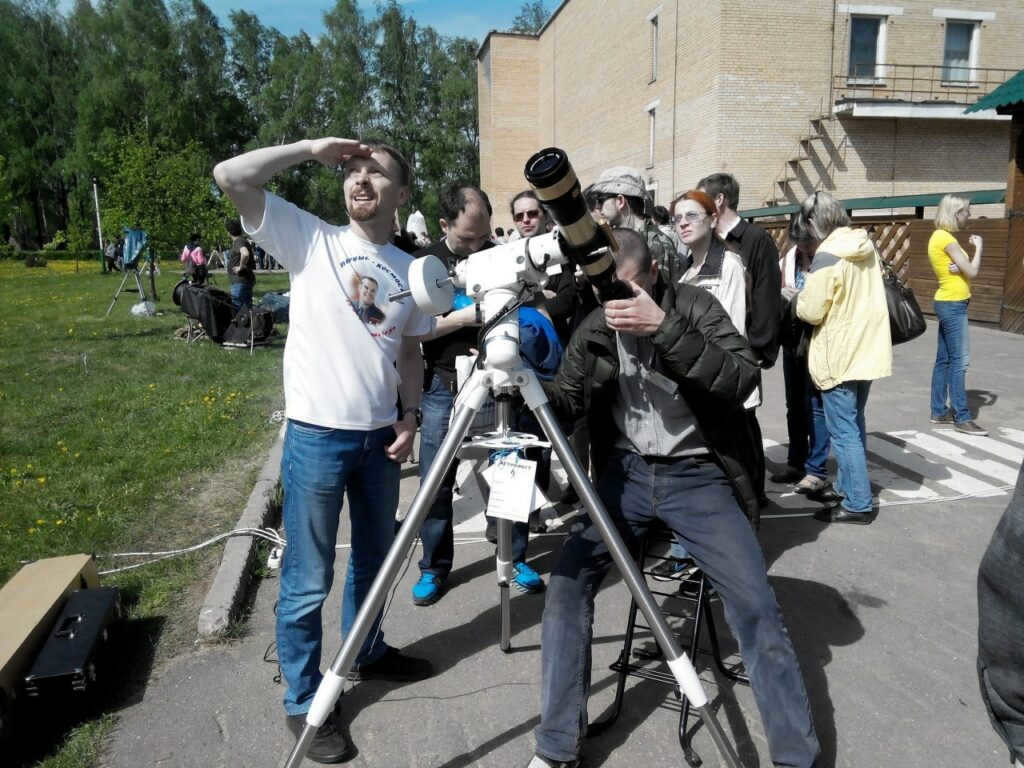
Publicizing the field of astronomy is gaining popularity worldwide. The United States introduced the tradition of hosting “star parties” – events at astronomy clubs where individuals can observe through telescopes. In 1968, John Dobson established The Sidewalk Astronomers Society, whose members organized “sidewalk astronomy nights”. On specific evenings and throughout the night, telescopes were set up on the streets in bustling locations, inviting people to peer through them. This concept garnered widespread support from other astronomy clubs, leading to the organization of the first international “night of sidewalk astronomy” on 05/19/2007.
AstroClub is considered to be the largest club in Russia.
The Pacific Astronomical Society, founded in San Francisco back in 1889, is known as the largest community in the world. If you are interested in observing celestial phenomena in any part of the world, you can get in touch with Astrotour, a travel agency specializing in this field. In the Domodedovo district, there is a public observatory called “Ka-Dar” where you can use a 14-inch “Schmidt-Kassegren” telescope to explore the depths of the universe.
There are also active children’s astronomy clubs, like “Apogey” in Samara. These clubs educate children about the latest scientific achievements in astronomy and space exploration. Children also learn about telescopes, binoculars, angle measuring instruments, and various techniques for observing space objects.
Tips for aspiring stargazers
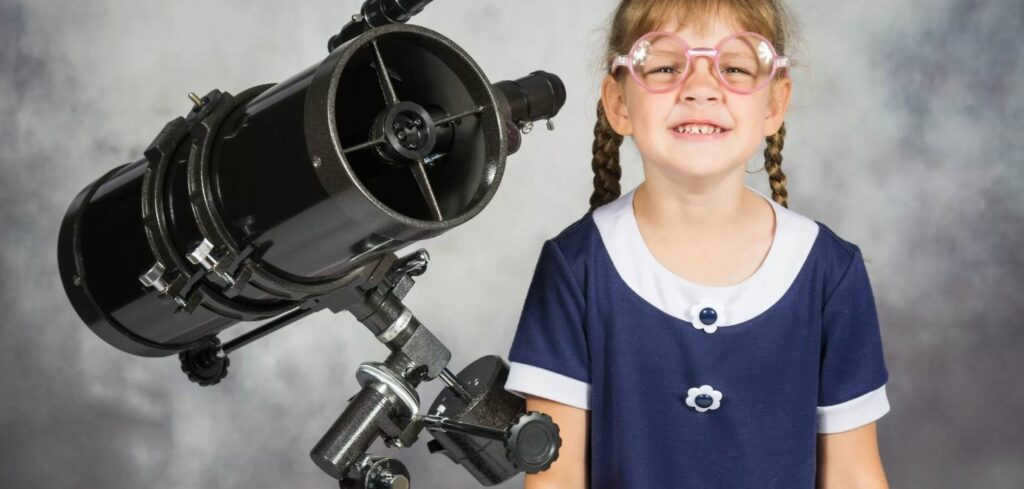
Astronomy is a fascinating pastime that transcends age boundaries. It is a pursuit that can be enjoyed by people of all ages. However, for those new to the field, there are certain fundamental concepts that must be grasped. So, the question remains: where does one begin?

- Having a basic understanding of celestial bodies and the fundamentals of astronomy, including the organization of the solar system, is essential. It is recommended to explore resources such as “Astronomy for Dummies” by Stephen Maran, as well as publications by Brian Green, Yakov Perelman, and Vladimir Surdin. Additionally, “Handbook of Amateur Astronomy” by P. G. Kulikovsky can provide valuable insights. For those seeking a more structured approach, there are courses available, such as those offered by Moscow State University. Observatories often accept individuals who are interested in learning the fundamentals of astronomy.
- Mastering the technique of locating Polaris and understanding star trails is essential before delving into the art of reading star maps.
The stability of a telescope depends on the type of mount it has. An alt-azimuth mount is simple and reliable, allowing for movement back and forth and left and right, but it does not compensate for the Earth’s rotation (which makes it suitable for beginners). On the other hand, an equatorial mount is more complex and allows for tracking an object along one axis (making it ideal for experienced astronomers). A Dobson mount is specifically designed for large telescopes, while an automated mount requires initial adjustments and then independently adjusts itself to different objects.
Amateur astronomers often prefer models from manufacturers like MEADE (USA), Sky-Watcher (Canada), Celestron (USA), Bresser (Germany), Levenhuk (Russia), Orion (USA), TAL (Russia), Sturman (Russia), Konus (Italy), and Veber (Russia).
When making a purchase of binoculars, it is important to consider the aperture and zoom options. For standard models, the aperture typically ranges from 30-50 mm (such as the Nikon Action EX 10×50 CF and the Nikon Aculon 10-22×50). In the case of astronomical models, the aperture tends to be between 50-80 mm (like the Celestron Cometron 12×70 and the Levenhuk Energy 10-30×60). For larger astronomical models, the aperture should be at least 90 mm (such as the Veber BP 25×100 and the Celestron SkyMaster 25×100).
Binoculars with image stabilization are particularly popular among consumers. Additionally, when making a purchase, it is important to consider factors such as the true and apparent angle of vision, the exit pupil, and its outreach.
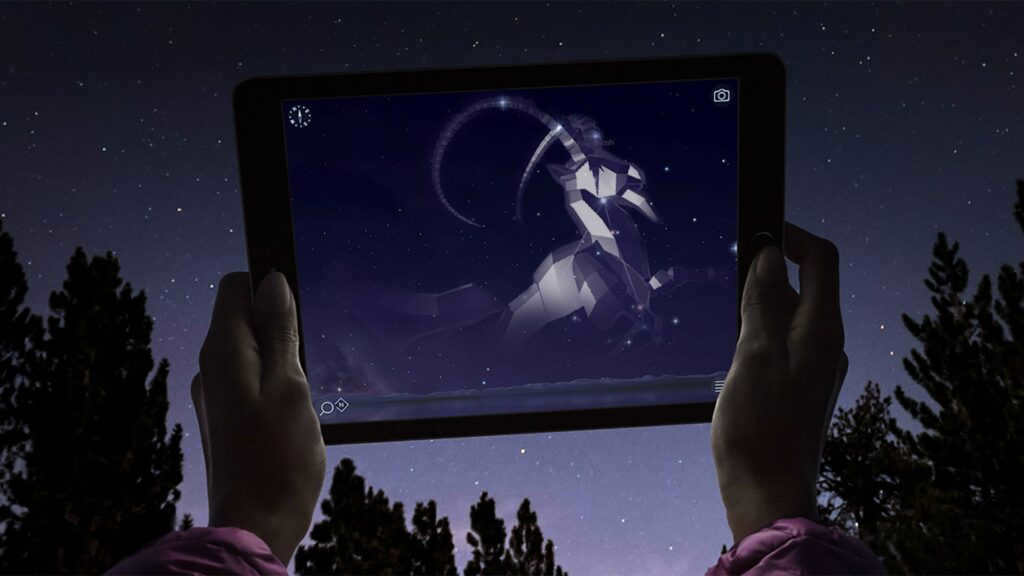
Modern advancements in technology have greatly simplified the work of astronomers. Novices simply need to install certain software.
At the top of the list of essential programs is Stellarium – a planetarium software that provides a realistic model of the sky based on entered coordinates, giving the impression of observing through a telescope outdoors.
For iOS and Android users, there is the Star Walk 2 application which offers a forecast of major astronomical events. By pointing your smartphone with a digital compass at the sky, the program will display the exact location of celestial objects in real time.
There are several powerful applications available for processing astrophotographs, such as IRIS, DeepSkyStacker, IzmCCD, and Audela. These tools can greatly enhance the quality of your photos. Additionally, there are also useful helpers like Astrocalendars and ephemeris generators. For example, Astronomical Calendar 4.0 can provide you with detailed information about astronomical events, while EmapWin allows you to visualize solar eclipses. If you need to calculate the ephemeris of planets, you can rely on AstroCalc.
How should we properly observe the sky?
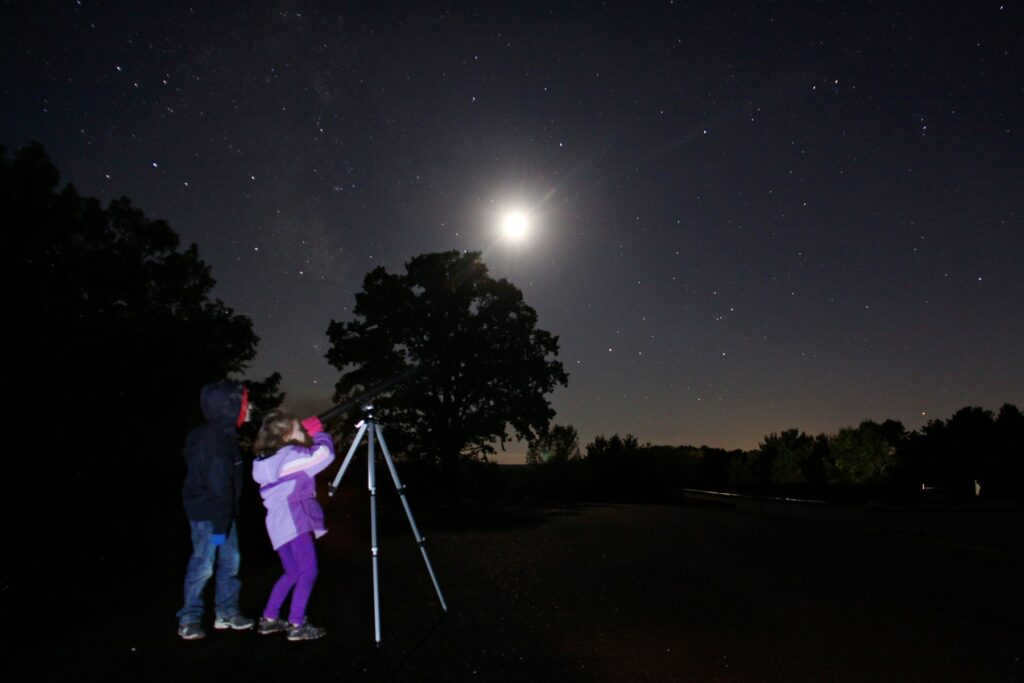
First, it is important to select a suitable location for stargazing. Ideally, this should be a spot away from the city where the light pollution is minimal. To observe the sky comfortably, it is recommended to lie down. Therefore, it would be helpful to bring a blanket or a recliner. Additionally, it is advisable to bring warm footwear, a thermos with hot tea, a light snack, and a turtleneck, as starry nights can be chilly even during hot days. Don’t forget to bring a notebook and a pencil to jot down your observations. While it may not be very convenient to write in complete darkness, your eyes will adjust after approximately thirty minutes. It is also beneficial to use a red light when searching for specific celestial objects.
Starting with 20x binoculars, you can begin your journey into astronomy. As you progress, you may consider purchasing a telescope. With these tools, you’ll have the ability to observe the International Space Station, telecommunication Iridiums, shooting stars, asteroids, and even witness the beauty of the northern lights.
Finding a Community of Astronomy Enthusiasts
The number of amateur astronomers has been steadily increasing. In Russia alone, there are over 15,000 individuals who share this passion. The internet provides a convenient way to connect with like-minded people through observatory websites and astroclub forums. By registering and becoming a member, you can fully engage in discussions and activities. Furthermore, many cities with planetariums or observatories have amateur astronomy clubs where you can meet fellow enthusiasts.
Valuable resources (websites, books, lectures)
Engaging and informative websites:
- Galaxy Exploration;
- Special Astrophysical Observatory Website;
- Ranking of Astrocosmic Sites by Users;
- Astronomy and Telescope Construction;
- Virtual Observatory of GAISH;
- Official Website of “Sky and Telescope” Magazine;
- Website of Astronomy Magazine;
- Starlab Magazine Website;
- Starlab Forum;
- All-Russian Astronomical Portal;
- Astronomy Course for Educators and Students of St. Petersburg;
- Course “Fundamentals of Astronomy” at Lomonosov Moscow State University’s Physics Department.
Modern amateur astronomy: a prestigious and captivating hobby
Modern amateur astronomy is a captivating and intellectually stimulating pastime that offers a unique opportunity to expand one’s horizons, forge new connections, and delve into the enigmatic depths of our vast Universe. Through the lens of a telescope, incredibly exquisite constellations, nebulae, supernovae, and even undiscovered planets appear within reach, beckoning you to reach out and grasp the tail of a comet. The close-knit community of amateur stargazers warmly embraces newcomers, offering guidance and support as they embark on this exciting new journey. Los Angeles presents its own vibrant celestial realm, eagerly awaiting your exploration.
Lately, I’ve noticed a growing interest among various individuals in the fascinating field of astronomy. This is quite encouraging, as studying astronomy is, in a sense, an attempt to move forward. As we gaze at the sky, we are witnessing the light of stars that have long ceased to exist. It’s like catching a glimpse of the past. Undoubtedly, astronomy provides us with a window into our origins, a glimpse back to the birth of the universe and life itself.
If you believe that astronomy is challenging, you’re mistaken. Anyone can embark on astronomical observations. It’s an enriching experience that offers a sense of fulfillment. For beginners, astronomy revolves around observation and acquiring basic knowledge, which can be easily obtained from sources like Wikipedia.
What can you see in the sky?
- The moon
- planets
- stars
- Andromeda Nebula (on a good day)
- Milky Way
- artificial satellites
- meteors (and, if you are very fortunate, meteorites)
- comets (if there is a comet nearby)
- UFOs (if you consume alcohol beforehand)
Location: Upland or plain. It is preferable to be away from the city, as the city lights can interfere.
Time: Depending on the type of observation. It is best to start around 10:00-11:00 PM. The weather should be clear (it is advisable to check with gismeteo.ru).
Moon and planets
The Moon, which is the Earth’s only natural satellite, shines as the brightest object in the night sky. There are several different phases of the Moon that can be observed (see diagram).
1 – new moon (when the Moon is not visible), 2,3,4 – waxing Moon (3 is also known as “first quarter”), 5 – full moon, 6,7,8 – waning Moon. The dates of these phases can be found in the astronomical calendar or on specialized websites. Alternatively, you can estimate them mentally, considering that a full cycle, known as a lunar month, lasts approximately 28 days with a margin of about 1 day.
There is another fascinating celestial body in the heavens known as the planet Venus. It is quite noticeable when it appears in the sky because it shines the brightest. In ancient times, it was referred to as the “morning star” due to its frequent appearance during the morning hours. Venus can be mistaken for Mars as it gets closer to Earth. However, Mars has a reddish tint, so if you observe carefully, the distinctions will be apparent. Interestingly, Mars has two moons – Deimos and Phobos, but unfortunately, they cannot be seen without a telescope.
Jupiter, the largest planet in our Solar System, is an incredibly luminous object. If you have binoculars, you will be able to spot four tiny specks near Jupiter. These are the Galilean moons Io, Europa, Ganymede, and Callisto. Only four of Jupiter’s moons can be observed, even though it has many more satellites. Nevertheless, this is the current state of things.
Stars and clusters
In the night sky, you can always find several stars and constellations (if they can be observed at the right time of year, day, etc.):
The English letter w is represented, with a slight horizontal stretch. It can be seen quite high in the sky, at an angle of 60-80 degrees to the horizon. To locate it, simply look for the letter w.
The Big Dipper (or Great Bear) is also easily noticeable. The four stars form the bowl, and the three stars make up the handle. There is also a smaller star in the middle of the handle, which requires good eyesight to see.
In our next discussion, we will continue to explore constellations and move on to the other celestial objects mentioned above that are visible in the sky.
Despite being a precise discipline similar to physics or chemistry, astronomy offers accessible opportunities for anyone to observe the starry sky. Nowadays, there is a growing interest among individuals who desire to comprehend constellations, peep through a telescope to explore the moon and planets, witness nebulae and faraway galaxies firsthand – in summary, to adopt astronomical observations as their hobby. However, the challenge lies in engaging with a subject matter that one possesses limited knowledge of.
Getting started from scratch, it is no easy task to comprehend even the most basic books on observational astronomy. Constantly reading raises inquiries, the responses to which are implied in such books that are already familiar to the reader. Let’s say the writer states, “Look 30 degrees south.” Where exactly is that? And how can one differentiate planets from stars? What does Venus appear like in the sky? And what is the significance of a star’s brilliance?
If you occasionally find yourself asking these or comparable questions, this page is designed with you in mind. Within it, you will discover links to articles that will hopefully provide answers to the fundamental “what,” “how,” and “why.”
Astronomy is a pastime for the “unconventional”. Instead of sleeping at night, one gazes into the frigid expanse of space, ventures far beyond the city limits, and spends the night under the open sky, disregarding all other obligations just to witness the transit of Mercury across the Sun’s surface… You may think I’m joking, but trust me, if you have a genuine interest in astronomy, others will see you as someone with peculiarities, at the very least. However, it’s ultimately your choice, and if you’re intrigued, I’m here to provide assistance.

Don’t be in a hurry to purchase a telescope
Many individuals begin their astronomy adventure by investing in a telescope. However, due to a lack of knowledge and practical skills, they often find themselves unable to aim it anywhere other than the Moon. And even if they manage to aim it correctly, the view is far from the quality of the “Hubble” images. As a result, beginners become disappointed, lose interest in astronomy quickly, and their telescope ends up collecting dust on the balcony.
Start by selecting a location
To start your hobby, first choose a suitable location. Find a comfortable open space that is away from tall buildings, trees, and, most importantly, streetlights. This may be more challenging for those of us who live in cities. Typically, it could be a quiet lawn in a less popular park, a partially abandoned stadium, or if you’re lucky, access to the roof of a tall building. Finding the perfect spot that is not too far from home, offers an open view, has fewer streetlights, and, most importantly, is safe, can sometimes take a significant amount of time. And just when you think you’ve found the ideal spot, there could be construction noise, dog breeders, drummers, bonfires, or even other individuals with different interests. It’s always a good idea to have a backup location in mind.
Discover How to Locate Polaris
If you are currently reading this article in Russian and reside in the Northern Hemisphere, then you have the opportunity to observe Polaris on any clear night, regardless of the season. Take the time to learn how to locate this star.
It’s fascinating how many individuals mistakenly assume that Polaris is the most brilliant star in the night sky. However, that is not the case. Sirius holds that title as the brightest star. In reality, Polaris is only the 49th brightest!
To successfully locate Polaris, you must first locate the Big Dipper. From the outermost stars of the “scoop” (not the handle!) of the Big Dipper, draw an imaginary straight line, and it will essentially lead you to Polaris.

The plumb line extending from Polaris to the horizon can be used to determine the direction of the north. If you face Polaris, the north will be directly in front of you. To your right will be the east, to your left will be the west, and behind you will be the south. It is essential to familiarize yourself with these directions in order to orient yourself in the sky.
If you are unable to locate the Small Dipper, there is no need to worry. Its stars are faint and can be difficult to spot in urban areas. It is best to save the search for a later time when you have gained more experience.
Congratulations, you have successfully acquired the skill. If you discovered Polaris using the aforementioned technique, then you employed the star trails approach. This method entails using prominent and easily identifiable landmarks to locate inconspicuous, isolated, or faint objects.
This technique is applicable on various levels, such as locating Polaris with the unaided eye. The same method can be used to locate Sirius and Aldebaran, starting from Orion’s “Belt”. These are referred to as “one-step” trails.

However, when it comes to numerous faint objects, particularly when observing through a telescope, it is necessary to employ additional techniques. For instance, in my personal experience, I am able to pinpoint the dispersed star cluster M39 by starting from the prominent star Deneb in the constellation Cygnus and following a well-known route of relatively bright stars – the star trail.

Once you become proficient in the star trails technique, you will have the ability to locate virtually any celestial object visible in the night sky.
Get Stellarium up and running on your computer
Download and install the free planetarium software Stellarium onto your computer, as it is available for all major operating systems. The images displayed above were created using screenshots from this program, which provides a highly detailed depiction of the starry sky on various scales.
Make sure to set your location accurately in the program’s settings.

If you provide your exact geographic coordinates, you will be able to determine the exact location of celestial objects such as stars, planets, the moon, the sun, comets, and asteroids above you at any time of day or night.

Comprehend the program and its straightforward configurations. Attempt to locate Polaris in the virtual sky. Contrast the image with your personal observations.
Master the angular measurements, azimuth, and altitude
The actual distances between stars hold little significance for basic observations (although this data is certainly fascinating). In the celestial sky, all stars appear to be equidistant from us – they appear to be plotted on the vast black sphere of space surrounding the Earth, including the Moon and planets. Therefore, in astronomy, it is convenient to utilize angular measurements and distances – through angles between visible objects. It’s a worthwhile endeavor to comprehend them.

Moreover, recall your high school lessons on azimuth and elevation. Azimuth refers to the angle between an object and the northern direction. Hence, if the object is precisely towards the north, the azimuth is zero; if it is towards the east, the azimuth is 90°; if it is towards the south, the azimuth is 180°; and if it is towards the west, the azimuth is 270°.
Altitude, on the other hand, represents the angle between an object and the horizon line. For instance, when a star is just rising, its altitude is slightly over 0°; when it is directly overhead, the altitude is 90°. The values between azimuth and altitude will assist you in locating your hand and arm.
Being aware of the azimuth and elevation of an object in your area at the appropriate time will enable you to find anything you desire.
Begin your exploration of the stars
There are a total of 88 constellations in the celestial sphere, with approximately 50 of them visible in the middle latitudes of the Northern Hemisphere. And, congratulations, you have already familiarized yourself with 12 of them!
Isn’t it surprising? Have you ever heard of Cancer, Pisces, Sagittarius, Libra, and Aquarius? These names actually come from astrology, and they correspond to constellations within the Zodiac, an imaginary belt in the sky which the Sun, Moon, and planets travel through.
By studying the constellations, you will be able to navigate the night sky and locate planets, comets, and even newly discovered supernovae. Start by using Stellarium to examine the constellations, and then try to identify them in the actual sky. Keep an eye out for the remarkable and captivating Cassiopeia, Perseus, Cygnus, and Rising Sign. During winter, Orion is a particularly notable constellation to look for. Remember, take your time with this hobby – there’s no rush. Unlike a school class with an impending exam, this is meant to be an enjoyable pursuit.
Observe the moon
Make an effort to locate the moon on clear nights. Begin in the initial week following the occurrence of the new moon. The moon will become visible in the western sky after sunset, gradually moving towards the south and increasing in phase each day. During the full moon, the moon will also rise in the eastern sky. In the last quarter, finding the moon may be challenging as it will rise in the morning. This is when you can spot it for the first time during daylight hours. Once again, Stellarium can assist you with this.
Pay attention to the moon’s phases. Take note of how the full moon brightens the sky and outshines most of the stars. Try to memorize the constellations in which you observe our celestial companion. After observing half a dozen complete cycles, you will have a fairly good understanding of its behavior.
Discover the art of identifying and differentiating the planets.
When gazing at the night sky, it’s easy to mistake planets for stars, except for five of them which appear slightly brighter. However, unlike stars, planets don’t remain fixed in their positions. They wander across the sky, albeit at a slower pace than the moon. Therefore, it’s important to familiarize yourself with methods of locating these celestial bodies. To aid you in this endeavor, I recommend utilizing Stellarium and the information provided here.
Observe planets just as you would the moon. Take every opportunity to spot them. Take note of the constellations they currently reside in. How did their positions differ yesterday, a month ago, or even six months ago? Which ones exhibit a more radiant glow, and which ones appear dimmer?
Observe the International Space Station and other satellites
Numerous man-made satellites orbit around the Earth at all times, and a significant number of them are visible to the naked eye. The International Space Station is particularly easy to spot. It can be seen approximately every six weeks for a few weeks at a time, either shortly after sunset or just before dawn, appearing as a remarkably bright, steadily moving star. I have previously provided information on determining the precise timing for observing the ISS in your specific city.
Experience the Darkness: Explore the Night Sky Beyond the City Lights
In urban areas, the atmosphere is filled with the glow of street lamps, advertising lights, car headlights, and illuminated windows. This light pollution obscures the true beauty of the night sky, as if we were looking through a hazy lens.
To fully appreciate the celestial wonders above, venture out on a moonless night when the Moon is in its new phase, emitting minimal light. Escape the confines of the city and seek out a remote location, preferably in the serene countryside or majestic mountains.

Allow your eyes to become accustomed to it. Observe a genuine night sky that is devoid of light pollution, displaying a multitude of stars, just as humanity has gazed upon it throughout its history, excluding the past century.
For some of you, this may be the first time you are witnessing the awe-inspiring sight of the Milky Way.
Delve into the depths of the internet
Explore various articles on constellations, planets, and celestial objects within the Messier catalog on Wikipedia. Acquire knowledge about the true nature of what you are observing. Study the orbital paths of the moon and planets, as well as the laws governing their motion. Gain insight into the evolution of stars. It is truly fascinating to observe something when you possess an understanding of its essence.
Take advantage of educational videos available on YouTube.
Stay connected with my Telegram channel, where I provide updates on upcoming celestial events of interest to beginners.
Get yourself a pair of binoculars
Remember the advice against purchasing a telescope? If you still have a strong desire to own one, consider getting yourself a pair of binoculars instead.
Binoculars are lightweight and easy to carry with you when you venture out of town to enjoy the dark sky. They provide a straight image without inversion or mirroring (which is often the case with telescopes). They are also easy to point and have a wide field of view, making it effortless to locate specific objects. During the day, binoculars can be used to observe birds, architecture, landscapes, and other distant objects. Even if you decide to buy a telescope in the future, having binoculars will greatly assist you in locating desired objects.
Binoculars have two main characteristics: magnification and aperture, which are indicated by an “x” (e.g. 4×20, 12×70). The aperture is more crucial than the magnification.
Do not purchase binoculars with a magnification greater than 10x. This will make it difficult to keep the image steady, resulting in a shaky view and a limited field of vision. It will be challenging to orient yourself with such binoculars. Instead, opt for binoculars with an 8x magnification, which will provide a satisfactory viewing experience.
The aperture refers to the diameter of the front lenses. A larger aperture allows more light to enter the binoculars, enabling you to observe dimmer objects. Most fascinating celestial objects are dim in nature. Therefore, it is recommended to choose binoculars with a lens diameter of 40mm or more for astronomical observations. An ideal option for beginners would be 50mm. There are even larger “monster” binoculars available with apertures of 75mm, 100mm, and beyond, but these may not be suitable for your current needs.

An important aspect to consider when choosing binoculars is the type of prism system they use. There are two main types: Porro and Roof. Without going into too much detail, Porro binoculars provide a wider field of view, as seen in the photo above. Additionally, high-quality binoculars will have lens coatings, a comfortable strap, and a protective case. These features can typically be found in binoculars that cost around $70 and, when used skillfully, can provide a wealth of interesting observations under a dark sky.
If you have a limited budget but still have a strong desire to explore the cosmos, consider looking for inexpensive options in the second-hand market. You might find a telescope tube that someone you know is no longer using, or perhaps a gun sight or an old theater binoculars. Any type of optics can help satisfy your astronomical curiosity. For example, my first instrument was my father’s construction theodolite.
Caution. Do not attempt to view celestial objects through any optical devices without using specialized full-aperture filters approved for solar observation. Even a brief moment of direct exposure to the Sun can cause severe damage or permanent vision loss.
Engage in more frequent observations
Make it a habit to observe the night sky whenever it is clear. This is something all amateur astronomers do consistently, even if it’s just for a quick moment like going to the store – they take a glance at the sky. Take note of the sky’s quality, check if everything is in its place, locate the moon, determine its phase, and look out for any visible planets.

Perhaps astronomy will capture your interest next, just as it has captivated countless other enthusiasts from all corners of the globe.
I am interested in embarking on a journey in astronomy. What are the first steps I should take?
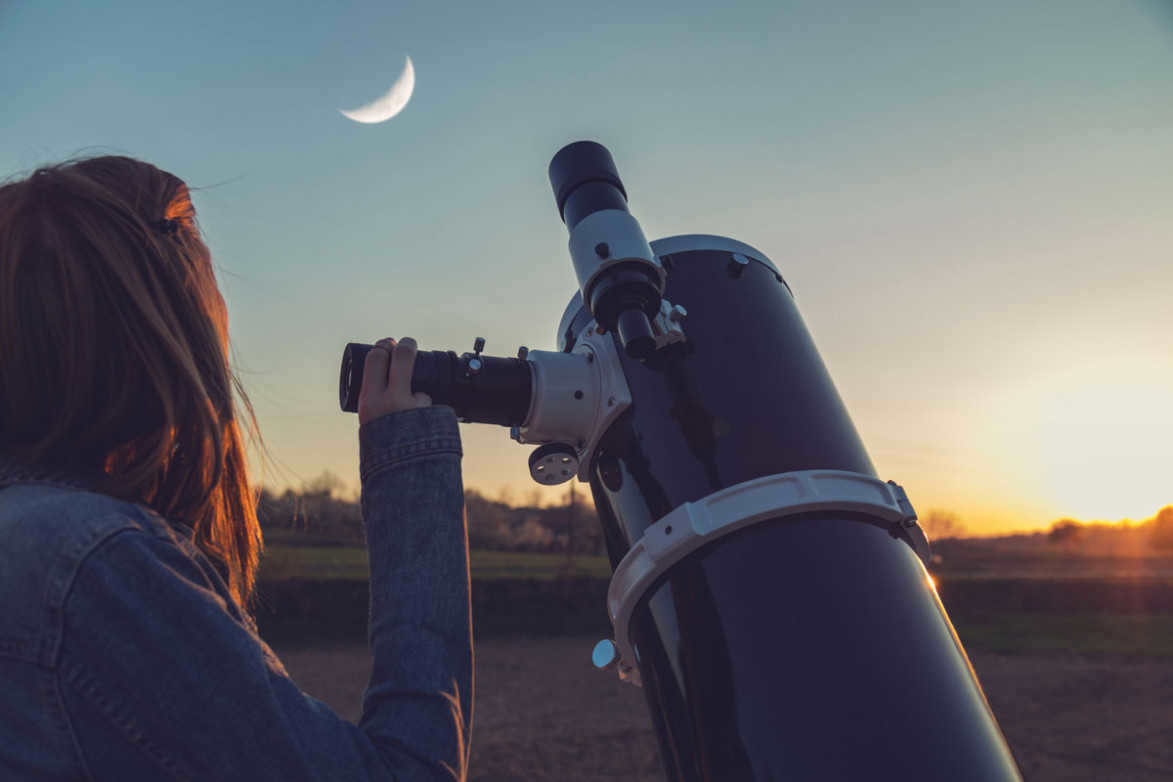

Despite the fact that most individuals associate astronomy specifically with a telescope, it is advisable to refrain from rushing into a purchase. Instead, it would be wise to begin by observing the stars with a telescope or even a pair of binoculars. Initially, either of these options will suffice, as they are much simpler to adjust and aim. An ideal instrument for a novice would be a pair of binoculars with a magnification of ten times and an aperture of 50 millimeters, which determines the level of image clarity. Through such binoculars, one can view rather intriguing celestial objects, such as the craters on the Moon. Additionally, it is possible to catch a glimpse of the Andromeda Galaxy or the rings of Saturn, although they may appear slightly blurred.
If you are truly interested in owning a telescope, it is recommended to begin with a refractor, also known as a refracting lens telescope. This type of telescope requires less maintenance and is more forgiving of light pollution, which is often unavoidable in urban areas. As you gain more experience and expertise, you may consider transitioning to a reflector telescope, which allows for more advanced observations and minimizes distortion.
Once you have developed a passion for astronomy, you can explore more sophisticated instruments. The prices of these telescopes can vary significantly, with some models even reaching half a million rubles. Dmitry Suzan, a tutor specializing in math, physics, and astronomy, explains that there are even telescopes available with automatic guidance systems.
Connected to a computer, pricier telescopes, beginning at a thousand dollars, come with their own database of stars, deep-sky objects, and a clock mechanism. After being adjusted and calibrated, the telescope will not only locate the desired object but also track and rotate with it.
What is the optimal location for stargazing?
If you want to observe the night sky, you can attempt to do so from the rooftop of a city building, but the lights of the city will obstruct your view. For the best experience, it is recommended to venture outside of the city and into nature. In these areas, there are no street lights, creating more favorable conditions for stargazing. To enhance your experience even further, consider bringing a telescope and embarking on a trip to the south of Russia, specifically the Caucasus region, which offers a great astroclimate with many sunny days and clear nights.
According to Lev Kamentsev, the desert or mountains are the most ideal locations for stargazing.
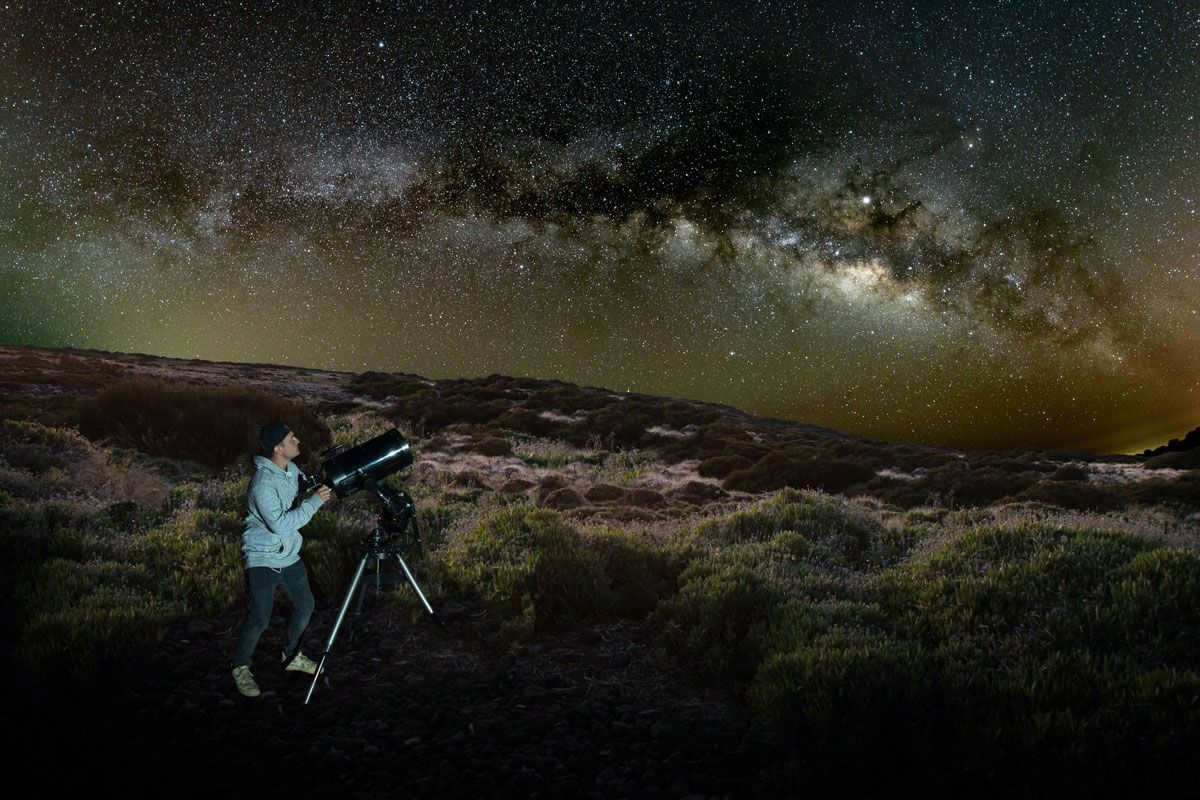
How can you avoid getting lost in the sky?
Once you have set up your equipment and selected a location for observation, it is important to engage in celestial orienteering. A traditional star atlas can be a valuable tool in this endeavor, and you can display it on a wall to gradually commit the main constellations to memory. If you are in the Northern Hemisphere, this is where you should begin.
The prominent and easily recognizable constellations in the night sky can serve as your guide to locating less conspicuous objects. For instance, by tracing a diagonal line from the outermost stars in the “scoop” of the Big Dipper, you can locate Polaris, which always hovers above the northern point of the horizon.
If you find this method too complex, there is a lifehack – the Star Chart app – that allows you to navigate the night sky using your mobile phone.
What can you observe in the night sky?
In the grand scheme of the entire universe, there is not much to see, just a small portion of our galaxy. However, even within that, there are plenty of interesting sights. From any city, you can spot the brightest stars, such as Aldebaran, Vega, Sirius, and the closest planets to Earth – Venus, Mars, Jupiter, Saturn. By the way, the best time to observe the planets is during opposition, when they are closest to us.
In addition, the Northern Hemisphere experiences three major meteor showers annually – the Geminids, Perseids, and Quadrantids. At the peak of their activity, they create a beautiful display resembling a heavy rainfall of stars.
Stellarium is an excellent tool that can assist you in various ways. By utilizing your current location, this innovative planetarium program is capable of accurately determining the precise positions of stars, planets, and constellations. It then provides you with a captivating visual representation of what is currently observable in the vast expanse of the sky.
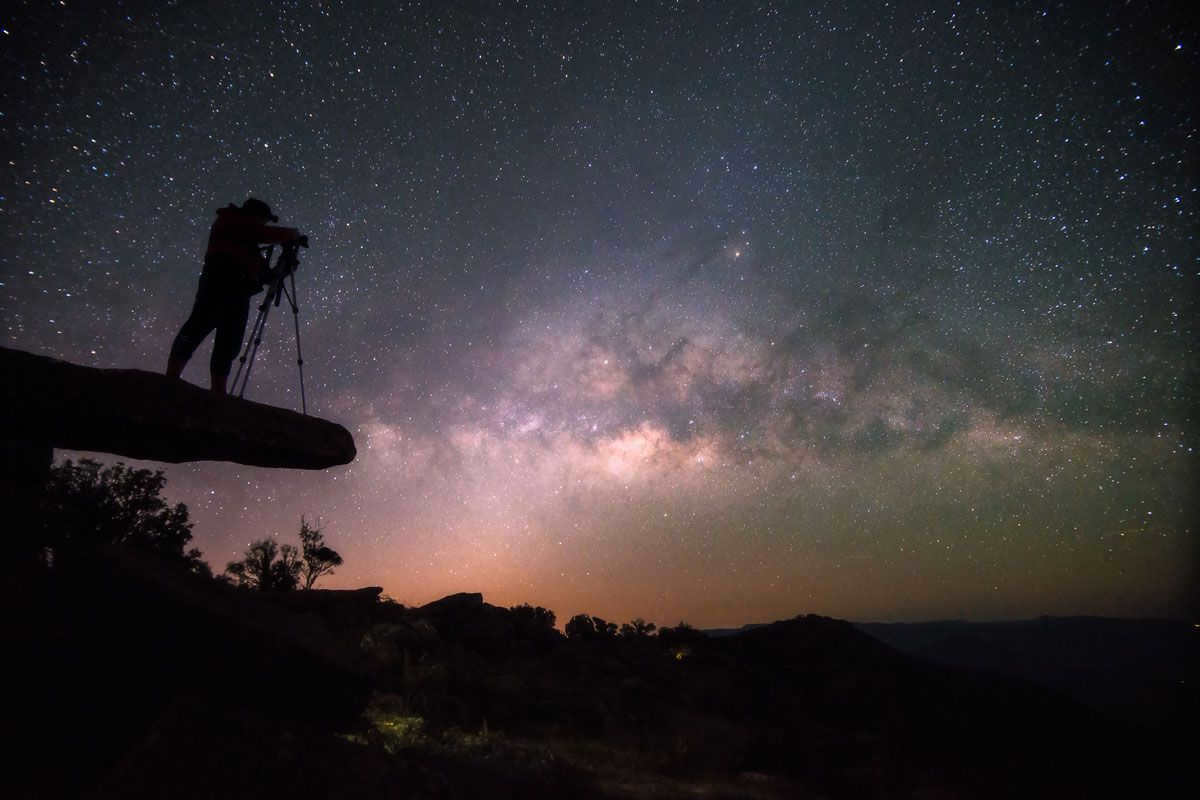
How to capture the wonders of the cosmos and what equipment to use?
To engage in astrophotography, you will require a camera that offers the option to adjust the shutter speed to a slow setting and possesses a high ISO sensitivity. Additionally, a fast lens that can gather ample light, along with a tripod to stabilize the camera and ensure clear images, are essential.
Once you have captured your celestial images, you can share them within dedicated online communities such as Astrophotography groups. Another option is to enter photography competitions, with notable ones including the annual Astronomy Photographer of the Year competition organized by the esteemed Royal Greenwich Observatory.
Ways to expand your knowledge in astronomy
As an enthusiast in the field, there’s no need to dive into complex physics textbooks. You can grasp the concept of why certain stars appear brighter than others and the reasons behind the displacement of some celestial objects just by delving into popular science literature.
For a comprehensive understanding, I would recommend exploring Vorontsov and Veliaminov’s textbook, which was originally published during the Soviet era but has been reprinted to include the latest discoveries and advancements in observatories. Another interesting read for students is Tsesevich’s book, “What and how to observe in the sky.” Additionally, “Starry Sky Observations” by Dagaev, “Starry Sky Treasures” by Siegel, and “Handbook of Amateur Astronomy” by Kulikovsky and Surdin are highly recommended sources.
If you desire a comprehensive understanding, consider reading “General Astrophysics” by Zasov and Postnov or any other book from the State Astronomical Institute of Moscow State University’s website.
For a more immersive experience, visit a planetarium where you can not only learn about planets and stars but also embark on virtual journeys to these celestial bodies projected onto the dome. Alternatively, you can attend a popular science lecture at a museum or find informative videos on YouTube, such as those available on the PostNauki channel.
Stay updated with the latest news on popular science portals or tune into podcasts like Planetary Radio, although proficiency in English is required for the latter option.
The Astronomy Olympiad is a unique intellectual competition because it focuses on a subject that is not commonly taught in schools. Unlike other competitions that cover subjects typically found in educational institutions, the Astronomy Olympiad offers students the opportunity to showcase their knowledge in a field that is often overlooked. This makes the competition stand out and gives it a significant advantage.

In this article, you will discover valuable insights on how to outperform your competitors and secure the top spot. Victor Zozulya, an esteemed Olympiad coach and teacher at the Russian team training camp, shares his preparation tips.
What is the structure of the Astronomy Olympiad?
The All-School Astronomy Olympiad consists of four stages: school, municipal, regional, and final. The final stage comprises three rounds:
The first round evaluates the participants’ ability to arrange cities based on the length of daylight hours and the sequence of planets from the lowest to the highest sign.
The second task in the third round challenges participants’ knowledge of space bodies using illustrated materials.
The fourth task in the final round combines the previous tasks’ concepts with the application of fundamental principles from the physics course.
The connection between the stage and calculations is very close, so mere facts will not suffice. In order to carry out all the calculations, a thorough understanding of physics is necessary.
General provisions of the All School of Astronomy
- The Olympiad is designed for middle and high school students.
- Access to the municipal stage is available to 7th grade students who have achieved passing scores in the school round.
- The methodical program of astronomy encompasses courses in physics and mathematics.
- For grades 9-11, the work consists of 6 tasks, while younger students have 4 tasks.
- Participation in the Olympiad is free of charge at all levels.
- Being awarded the title of champion or prize-winner at the final stage grants eligibility for a BVI when enrolling in a higher education institution in a field that aligns with the Olympiad’s profile.
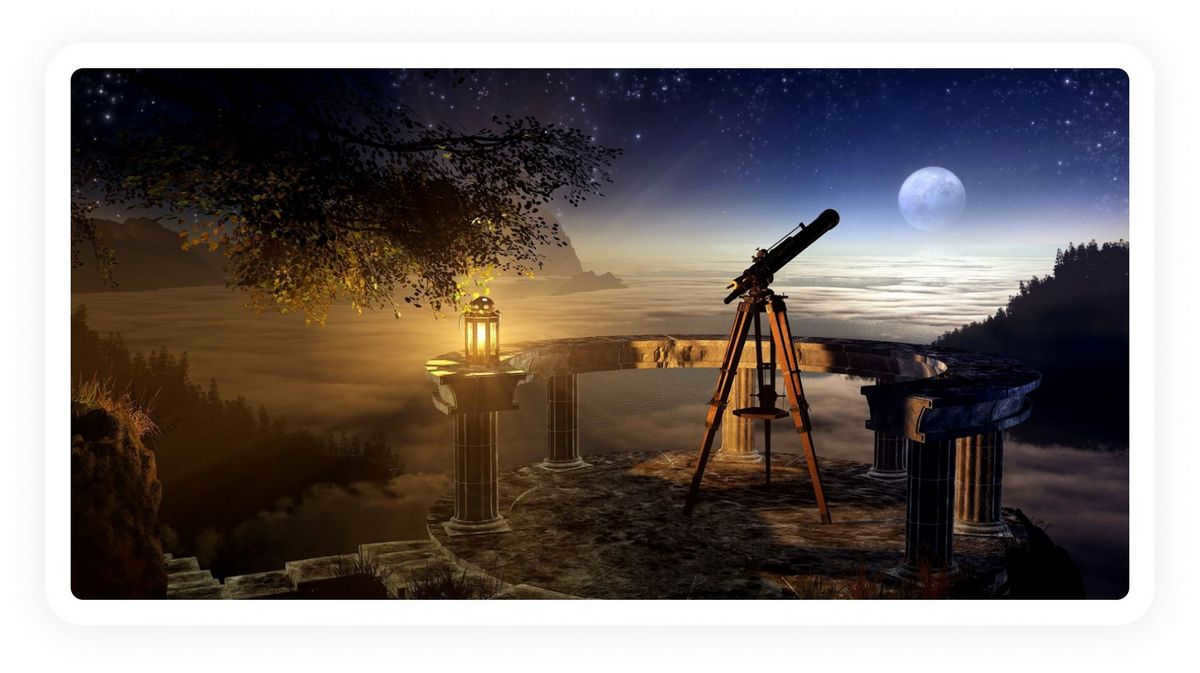
Moscow Astronomy Competition for Students
The Moscow Astronomy Competition consists of 2 online stages and a final stage in person. For students in grades 8-11, the final round includes both a theoretical exam and an observation round. During the observation round, students analyze photographs of space and planets and answer questions based on the pictures. Seventh graders only participate in the theoretical exam.
In the online stages of the competition, you will be given multiple-choice questions, and you have to select the correct answer or answers.
The ultimate contest includes verbal puzzles and charts. Students must independently solve and present all solutions. To qualify for the final round, participants must achieve the standard score in either the initial or intermediate stage.
The timetable for the Moscow Astronomy Olympiad:
To achieve victory and be recognized as a prize-winner, you will need to earn a BVI, which can be obtained by either having a BVI or scoring 100 points in the major subject. Although there is no USE in astronomy, knowledge of physics is tested in the Olympiad, and the results are taken into account in this subject. To benefit from these achievements, you must also pass the USE with a score of 75+.
For more detailed admission requirements, please visit the websites of the universities.
Online USE Experiment
Evaluate your understanding prior to the start of the academic year and have a chance to win valuable rewards!

What steps can be taken to get ready for the astronomy Olympiad?
Work through past problem sets
The Moscow Astronomy Olympiad website offers access to previous years’ questions. Familiarizing yourself with these will give you a sense of the format and common types of tasks, streamlining your preparation process.
There are verified facts in science at the Olympiad. Scientific movies will enrich the knowledge base and showcase visual imagery from outer space.
Complete exercises from astronomy textbooks
Achieving success in the Olympiad requires a solid understanding of physics fundamentals. Dedicate ample time to optics and calculating mass of objects. Utilize astrophysics textbooks during your preparation.
Join a course designed to prepare you for Olympiads
Indeed, it is essential as not all schools offer astronomy as a subject.
From July 17 to September 10
Open for students from grades 5 to 11
Participate in the Coalition Online Olympiad
Put your knowledge to the test and stand a chance to win valuable prizes






